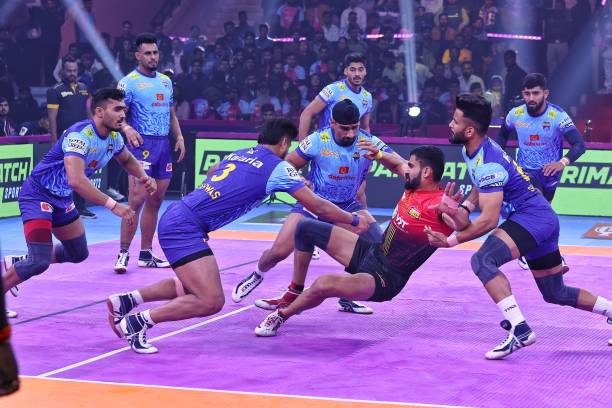
Kabaddi today has transformed from a traditional rural sport played in dusty fields to a global phenomenon with millions of fans across the world. The journey of Kabaddi is nothing short of remarkable, evolving from a grassroots game in India to an international sport with a professional league that attracts viewers from every corner of the globe. This article delves into the evolution of Kabaddi today from a traditional rural sport played in dusty fields to a global phenomenon with millions of fans across the world. The from its humble beginnings to becoming a global sport, highlighting five key milestones in this incredible journey.

1. Kabaddi’s Humble Origins in Rural India
The roots of Kabaddi trace back to ancient India, where it was initially played as a form of rural entertainment and physical fitness. Kabaddi today is far more professional, but its origins are deeply entrenched in the villages of India, where it was seen as a test of strength, strategy, and stamina. The game was traditionally played by young boys, using simple rules and no equipment, which made it accessible to everyone regardless of resources.
In rural India, Kabaddi was not just a sport but a social event that brought communities together. The game was played on fields, with minimal boundaries and a focus on physical agility and endurance. Kabaddi’s simplicity and low-cost nature made it an ideal sport for rural communities, where cricket and other sports were not as accessible. Over the years, the game became more organized, and various regional forms of Kabaddi emerged, each with slight variations in rules and gameplay.
2. The Rise of Organized Kabaddi Competitions
As Kabaddi grew in popularity within India, the need for organized competitions became evident. In the 20th century, the first formal Kabaddi tournaments began to take shape, providing a platform for talented players to showcase their skills. The Kabaddi today that we know, with professional leagues and international competitions, owes its existence to the groundwork laid by these early competitions.

In the 1950s and 1960s, Kabaddi was introduced into multi-sport events like the National Games of India, further elevating the sport’s profile. By the 1970s, the All India Kabaddi Federation was established, bringing a more structured approach to the sport. This was the beginning of the formalization of Kabaddi in India, which would later pave the way for its global expansion.
3. Kabaddi today: International Recognition and the Birth of Pro Kabaddi League
One of the most significant milestones in the journey of Kabaddi today came in the form of international recognition. In 1979, the Asian Kabaddi Championship was organized in New Delhi, and Kabaddi was officially recognized by the Asian Games Federation. This recognition marked Kabaddi’s transition from a regional game played in villages to a sport played at the international level.
The breakthrough for Kabaddi, however, came in 2014 with the launch of the Pro Kabaddi League (PKL) in India. The PKL revolutionized Kabaddi today, making it a professional sport with a structure similar to that of the Indian Premier League (IPL) in cricket. The league attracted massive sponsorships, international players, and celebrity owners, bringing a new level of excitement and viewership to the sport.
The Pro Kabaddi League made the game more appealing to urban audiences, and its success marked a major turning point for Kabaddi. The league’s popularity also helped in shaping a new generation of Kabaddi players who were well-trained, well-compensated, and highly competitive. The PKL’s influence was a key factor in transforming Kabaddi from a rural pastime into a global sport.

4. Kabaddi today: The Global Expansion
The success of the Pro Kabaddi League laid the foundation for the global expansion of Kabaddi. Kabaddi today is played in countries beyond India, such as Pakistan, Iran, Bangladesh, South Korea, and Japan. The sport has also spread to other continents, including Europe, North America, and the Middle East, with international Kabaddi leagues and tournaments being held regularly.
In 2004, Kabaddi made its debut at the Asian Games, where it has since become a staple event. The Kabaddi World Cup, organized by the International Kabaddi Federation, has brought together the best teams from across the globe, adding to the sport’s global stature. Countries like Iran and Pakistan have emerged as strong contenders, and Kabaddi tournaments are now held regularly in regions like the Middle East and North America.
The inclusion of Kabaddi in multi-sport events and the increasing number of international tournaments have given the sport greater exposure, making it more recognizable to global audiences. The rise of digital platforms has also played a crucial role in promoting Kabaddi worldwide, allowing fans from all over the world to watch matches live and follow their favorite players.
5. The Cultural Impact of Kabaddi
While Kabaddi today has evolved into a professional sport, it has also retained its cultural significance in India and other regions. Kabaddi is more than just a game; it is a reflection of community spirit, teamwork, and resilience. In rural India, Kabaddi has always been about more than just winning; it is about pride, camaraderie, and physical prowess.
The success of Kabaddi at the international level has helped preserve its cultural roots while giving it the global recognition it deserves. Players who come from humble backgrounds in rural India are now being recognized as international heroes, further motivating the youth to take up the sport. Kabaddi also serves as an important tool for promoting fitness, teamwork, and discipline among young people in India and around the world.
SUGGESTED FOR YOU
Cricket Game: 5 Key Reasons Cricket Became India’s Most Popular Sport
Conclusion
The transformation of Kabaddi today from a rural pastime to a globally recognized sport is nothing short of extraordinary. From its origins in ancient India to its rise as a professional sport with the launch of the Pro Kabaddi League, the journey of Kabaddi has been shaped by key milestones that have helped it reach its current global status. The sport’s growing international reach, its increasing popularity in various countries, and its ability to retain its cultural roots make Kabaddi a unique and exciting part of the global sporting landscape.
With the Pro Kabaddi League and international competitions continuing to flourish, Kabaddi today promises to grow even further, cementing its place as one of the most dynamic and exciting sports in the world. Whether in the villages of India or on the international stage, Kabaddi will continue to captivate audiences and inspire future generations of athletes.









